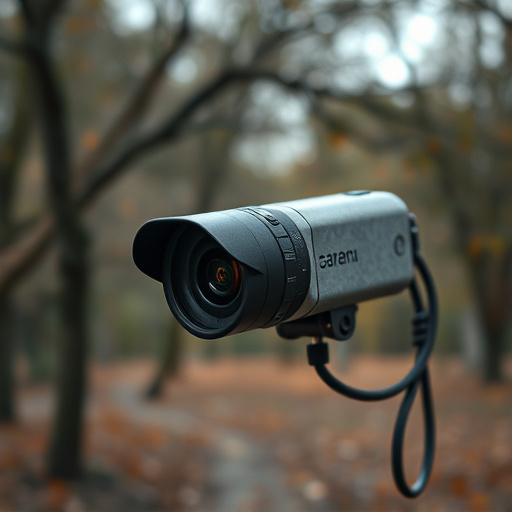In an era of advanced technology, undetectable wireless security cameras pose a significant threat to privacy. Microphone bug sweeping is crucial for identifying and locating hidden microphones used for surveillance. Regular sweeps safeguard against active and passive bugs, including the sophisticated undetectable wireless security camera bugs integrated into smart home devices. By combining EMF detectors, thermal imaging, and robust security measures, homeowners can protect their spaces from covert listening devices, ensuring privacy in the digital age. A multi-layered defense strategy involving regular updates, physical security, and educational awareness is essential alongside these advanced detection methods.
“In today’s digitally connected homes, ensuring privacy and security has never been more crucial. One often overlooked threat are microphone bugs, capable of compromising personal conversations and sensitive data. This article delves into the world of bug sweeping, exploring its significance in home security. We dissect various types of microphone bugs and their detection methods, shedding light on wireless security cameras as potential entry points. Advanced techniques to uncover undetectable bugs are presented, alongside preventive measures for a secure domestic environment, particularly focusing on the role of undetectable wireless security cameras in safeguarding your private space.”
- Understanding Microphone Bug Sweeping and Its Importance in Home Security
- Types of Microphone Bugs and Their Detection Methods
- Wireless Security Camera Technology: A Potential Vector for Bugs
- Advanced Techniques to Detect Undetectable Microphone Bugs at Home
- Preventive Measures and Best Practices for Securing Your Home Against Microphone Bugs
Understanding Microphone Bug Sweeping and Its Importance in Home Security
Microphone bug sweeping, also known as audio surveillance or hidden microphone detection, is a crucial aspect of modern home security. In an era where undetectable wireless security cameras are readily available, the potential for covert listening devices to be planted in homes has grown significantly. These hidden microphones can be used to record intimate conversations, monitor activities, and even transmit sensitive information without the owner’s knowledge.
Understanding microphone bug sweeping is essential for homeowners looking to protect their privacy and safety. It involves specialized techniques and equipment to detect and locate hidden microphones, ensuring that your home environment remains secure from unauthorized listening devices. Regular bug sweeping can help identify potential security breaches, giving you peace of mind and a sense of control over your personal space.
Types of Microphone Bugs and Their Detection Methods
Microphone bugs, often hidden and designed for covert listening, come in various types, each requiring distinct detection methods. Active bugs transmit signals to a receiver, making them more detectable through signal interception or frequency analysis. In contrast, passive bugs are nearly undetectable as they only record audio and don’t emit any signals themselves. These bugs can be challenging to identify without specialized equipment, such as spectrum analyzers or noise filters that detect unusual audio patterns.
One of the most insidious types is the undetectable wireless security camera bug, which combines audio and video surveillance capabilities while remaining virtually invisible. Detecting these requires a thorough inspection using thermal imaging or other advanced techniques. With the rise of smart home devices, it’s crucial to be vigilant against integrated bugs that might exploit voice control functionalities for covert listening or data exfiltration.
Wireless Security Camera Technology: A Potential Vector for Bugs
Undetectable wireless security cameras have emerged as a potential vector for bugs, raising concerns among homeowners and businesses alike. These advanced devices, while offering enhanced surveillance capabilities, can be exploited by malicious actors to insert listening devices or hidden microphones. The subtle nature of these cameras makes them easy to overlook during routine inspections, making it possible for bugs to go undetected for extended periods.
The integration of wireless technology in security systems has led to the development of undetectable cameras that blend seamlessly into their surroundings. However, this very feature can make them more attractive targets for bug implanters. As such, it’s crucial to employ robust security measures and regular sweeps to identify and mitigate any potential bugs, especially in high-risk areas like offices, homes, and public spaces with sensitive information exchange.
Advanced Techniques to Detect Undetectable Microphone Bugs at Home
In today’s digital era, ensuring privacy and security at home has become paramount. One insidious threat that often goes unnoticed are undetectable wireless security cameras, which can be disguised as everyday objects like microphones or light bulbs. To combat this, advanced detection techniques have emerged to uncover these hidden devices.
Experts recommend utilizing advanced electromagnetic field (EMF) detectors capable of identifying subtle anomalies in radio frequency signals. These tools can pick up on the unique emissions from wireless security cameras, even those designed to be untraceable. Additionally, thermal imaging cameras are invaluable for detecting temperature discrepancies that may indicate the presence of hidden cameras. By combining these cutting-edge methods, homeowners can sweep their spaces thoroughly, ensuring a safer and more secure environment free from undetectable microphones and other surveillance devices.
Preventive Measures and Best Practices for Securing Your Home Against Microphone Bugs
To secure your home against microphone bugs, start by implementing robust preventive measures. One effective strategy is to use undetectable wireless security cameras that blend seamlessly into your environment without raising suspicion. Regularly update firmware and software on all smart devices to patch known vulnerabilities. Additionally, enable encryption on all communication channels to make it more difficult for unauthorized access.
Best practices include maintaining physical security by securing wires and ports, using physical shields for devices, and keeping your home network isolated from public networks. Educate your family about the risks and importance of not connecting unknown devices to your home network. Regularly audit and remove any unused or unfamiliar apps and hardware to minimize potential entry points for malicious actors.
In today’s digital age, securing your home from hidden threats like microphone bugs is paramount. By understanding the various types and detection methods, utilizing advanced technologies like undetectable wireless security cameras, and implementing robust preventive measures, you can fortify your sanctuary against potential eavesdropping devices. Stay proactive in protecting your privacy and peace of mind.
